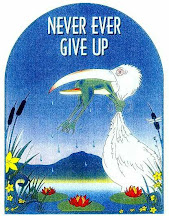Coloring Easter Eggs~~~ can be done in many different methods besides buying
the traditional dyes.
Here are some ideas to make this Easter fun and unique with creative Easter Eggs.
 You can color eggs using nature's very own dyes.
You can color eggs using nature's very own dyes.
Place eggs in a single layer in a pan and cover with water.
Add about 1-teaspoon of vinegar. Add the natural dye appropriate to the color you want your eggs to be.
Bring water to boil, reduce heat and simmer for about 15 minutes.
Remove the substance you used to color the eggs; put eggs into a bowl to dry.
If you want your eggs to be a darker shade, cover them with the dye substance and let them stand overnight in the refrigerator.
Here are some dye substance ideas:
~~
Orange = yellow onion skins
Yellow (light) = orange or lemon peels; carrot tops, celery seed or ground cumin
Yellow = ground turmeric
Pale Red = fresh beets or cranberries; frozen raspberries
Pale Green = Spinach leaves
Green-gold = Yellow Delicious apple peels
Blue = Canned blueberries or red cabbage leaves
Beige to brown = Strong brewed coffee
 Another method of dying eggs is to use the crepe paper dye method.
Another method of dying eggs is to use the crepe paper dye method.
Soak crepe paper in hot water in individual bowls or cups for each color.
Add eggs and allow to sit in water until the desired color is achieved.
Remove with slotted spoon and allow to dry.
Polish with a small amount of cooking oil to give your egg a sheen.
You can also make some eggs a spotted creation.
Simply add 2-teaspoons of Canola oil in the water with your dye material.
This will leave mysterious spots on your egg where the oil hits and doesn't allow the dye to work.
No two eggs will be the same.
 Named Eggs -
Named Eggs -
Write name on uncolored egg using a crayon.
Then dip the egg in a dark color of choice.
Remove egg and place in 200-degree oven for a few minutes; until wax is melted. Wipe with paper towel and dip again in a lighter dye to fill in pattern where waxed crayon writing was.
Polish finished egg with cooking oil and soft cloth.
You can also use candle wax dripped onto boiled eggs.
You can do several colors, in several layers.
These make some unique and pretty designs.
You can even elaborate by adding ribbon, sequins, lace, tassels, etc. onto the warm wax on egg.
 Easter is early this year.
Easter is early this year.
Easter is always the 1st
Sunday after the 1st full moon after the Spring Equinox (which is March 20).
This dating of Easter is based on the lunar calendar that Hebrew people
used to identify Passover, which is why it moves around on our Roman calendar.
Based on the above,Easter can actually be one day earlier (March 22)but that is pretty rare.
Here's the interesting info:
This year is the earliest Easter any of us will ever see the rest of our lives!
And only the most
elderly of our population have ever seen it this
early (95 years old or above!).
And none of us have
ever, or will ever, see it a day earlier!
 Here are the facts:
Here are the facts:
1) The next time Easter will be this early (March23) will be the year 2228 (220 years from now).
The last time it was this early was 1913 (so if you're95 or older, you are the only ones that were around for that!).
2) The next time it will be a day earlier, March 22, will be in the year 2285 (277 years from now).
The last time it was on March 22 was 1818.
So, no one alive today has or will ever see it any earlier than this year!
 Then there is just plain Scrambled eggs for breakfast...
Then there is just plain Scrambled eggs for breakfast...
 Some toast, bacon and of course Ketchup on the eggs... ;)
Some toast, bacon and of course Ketchup on the eggs... ;)









4 comments:
Roughly thus they dye also in my country the Easter eggs, with materially from the nature.
Exist also the chemical substances of course, that him you find in the bookshelves super markets!
Also with the same way him we eat! LOL
Great info on the dates Dee.. I never realised how Easter was worked out.. never give it much thought. Now it's got my interest a bit more so thats a bonus.. :O)
Dee... may I use a portion of this post about the natural things to use for colours? ....
Post a Comment